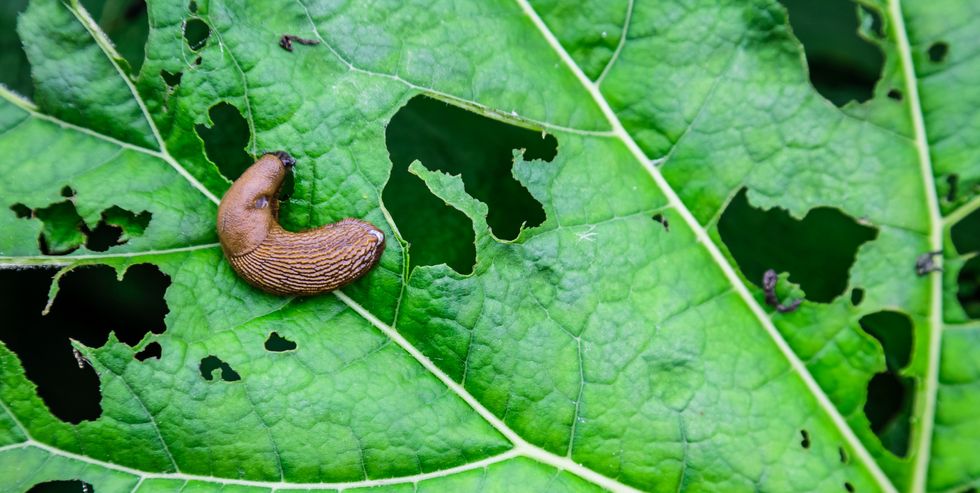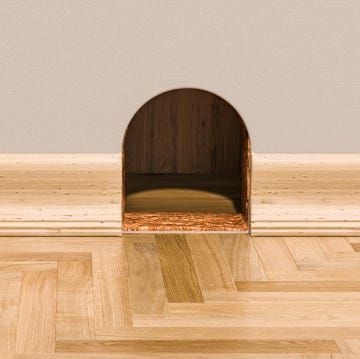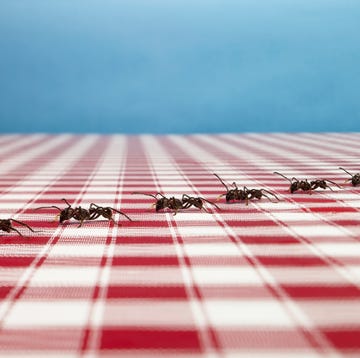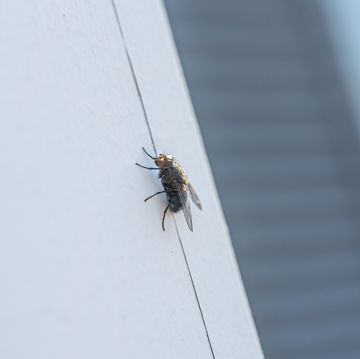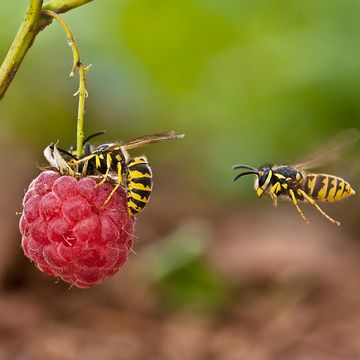Slugs aren't a welcome sight for any gardener. They can reduce the carefully tended plants in your pots, borders and vegetable plot to a collection of sad-looking stalks overnight, leaving their telltale slimy tracks among the carnage. And this year, in particular, they seem to have set about doing exactly this with a new level of determination and vigour.
Why are the slugs in our gardens so prolific this year? The RHS says it's likely to be due to a mild winter followed by a wet spring, which created the ideal conditions for slugs and meant they became active earlier than usual. To make things worse, a wetter-than-usual July means our gardens haven't dried out as they usually would, which all adds up to a bumper year for slugs.
Keeping slugs at bay is likely to be high on the agenda of most gardeners, but protecting your prized plants doesn't necessarily need to involve reaching for the slug pellets, which can have a harmful effect on wildlife. However, while we've all heard about natural methods of controlling slugs, are they really up to the job of stopping slugs in their silvery tracks?
What to read next
To shed light on the issue, we spoke to Dr Hayley Jones, Entomologist and Lead Researcher for the RHS, and slug expertsDr Tom White, of the Natural History Museum, to find out which tactics are most likely to have the best results. Here's what we found out...
Egg shells, grit and pine bark mulch
If you've tried using crushed egg shells before and failed to deter slugs, check that you've been doing it the right way. According to experts at the RHS, the trick is to make a continuous barrier around susceptible plants at least 8cm wide and thick enough to cover the soil underneath completely. The same applies if you’re using horticultural potting grit or pine bark mulch.
The RHS' Dr Hayley Jones advises rinsing and drying egg shells then crushing them into pieces around 1cm square in size. "You’ll need to top up the barrier once it starts to get washed away by rain or watering, or if animals take the pieces of shell away or dig them up," she adds.
Dr White agrees these methods are likely to have some success. Slugs will avoid rough, sharp, dry or absorbent materials, which can stick to and soak up the slime that allows them to move freely. However, they are likely to be more effective when dry.
"A ring of grit around a hosta, for example, might be very effective during a period of dry conditions, but slugs will probably cross with considerably more ease after it has rained heavily," he cautions. "Take extra care when watering to avoid the mulched area and watch out for slugs after rain."
Wool pellets
Like egg shell, grit and pine bark, wool pellets like these Slug Repelling Wool Pellets need to be spread around the base of plants so that they cover the soil. Once the pellets come into contact with water, they swell to create a protective felty mat. A 1 litre bag costs around £6 and is enough to protect two or three plants in a border or in 25cm diameter pots.
Dr White says the fuzzy surface may be off-putting to slugs but, again, the wool pellets may be less effective when they are wet.
Copper tape
This is a trick that some gardeners swear by, but an RHS slug trial that used copper tape with a serrated edge to protect plants in containers and copper collars around plants in flower beds didn't find it was any more effective than leaving your lettuces and hostas unguarded.
You might have heard the claim that copper tape has an electrical charge that deters slugs but both Dr Jones and Dr White dismiss this as a gardening myth.
However, copper tape remains something of a mystery, as Dr Jones explains: "Studies show that slugs and snails prefer not to cross the copper but, as yet, we don’t know why that is. People used to think the copper gave the slugs an electric shock, but research has shown that this is not the case."
Throw everything at the problem
Both Dr White and the RHS advise using a combination of natural slug-management methods to achieve the best results. Alongside the strategies above, regularly remove weeds and debris from the soil around your plants to expose slugs. Pick them off plants by hand and relocate them to areas of your garden where they'll wreak less havoc, such as your compost heap or beds with fewer plants that are irresistible to slugs.
As young plants are particularly susceptible to slug onslaught, the RHS also suggests growing plants on benches and waiting until they are larger and more robust before planting them out.
If you've room, adding a small wildlife pond to your outdoor space could also help as the frogs and toads it will attract will prey on slugs and snails and keep their numbers in check.


